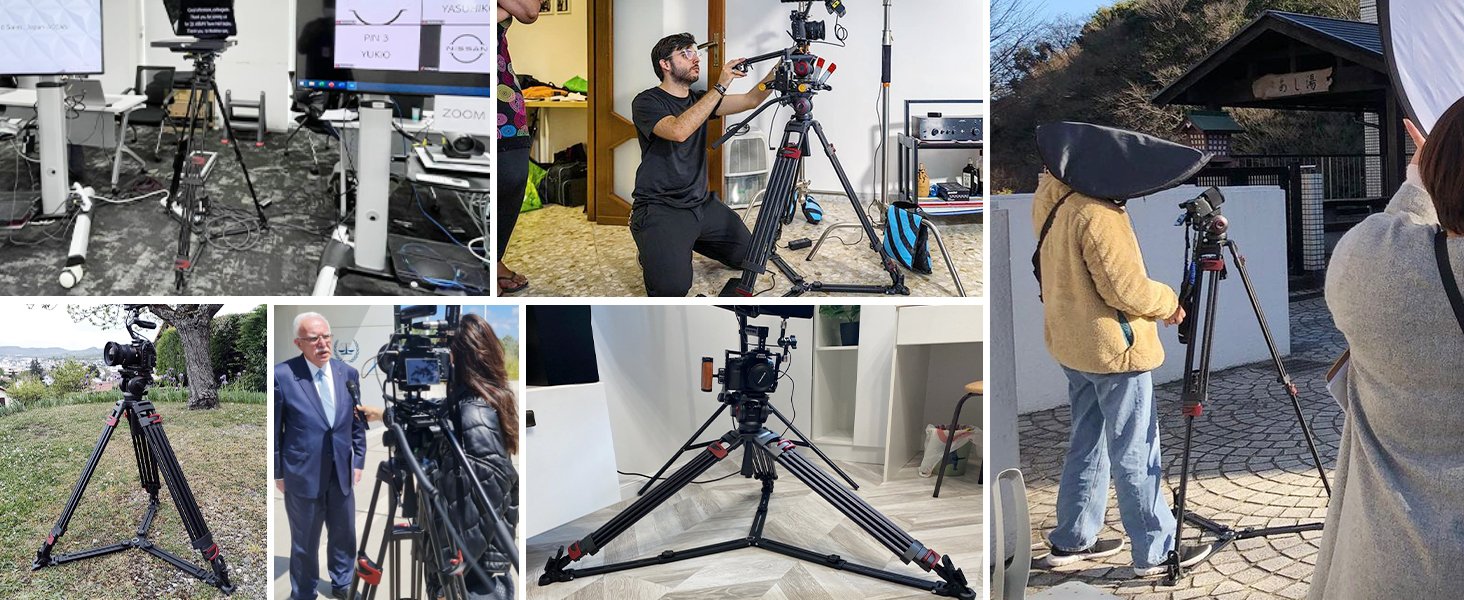For photographers navigating the demands of dynamic environments, the trade-off between tripod portability and stability remains a critical consideration. Miliboo, a brand renowned for its engineering ingenuity, addresses this challenge through advanced material science and modular designs. This article explores how models like the MUFA-BK, MYT803, and Travel Pro Series exemplify this balance, offering insights into modern tripod innovation.
1. Portability: A Priority for On-the-Go Creatives
Lightweight tripods are indispensable for travel and outdoor photography. Miliboo’s MUFA-BK tripod exemplifies portability, featuring a reverse-folding design that collapses to 38 cm while weighing just 1.7 kg. Its aerospace-grade aluminum legs and compact form factor make it ideal for backpack storage, catering to hikers and urban explorers. Similarly, the Miliboo Travel Pro Series incorporates a hybrid carbon-aluminum leg structure, reducing weight by 15% compared to traditional models without compromising load capacity.
However, ultra-portable tripods often face skepticism regarding stability. Miliboo counters this with the MUFA-BK’s reinforced leg locks and anti-slip rubber feet, ensuring grip on uneven surfaces like rocky trails or polished studio floors.
2. Stability: The Foundation of Professional Imaging
Stability hinges on structural integrity and load distribution. The Miliboo MYT803 employs a carbon-fiber-reinforced center column and 75 mm bowl-shaped base, minimizing vibrations during long exposures or windy conditions. This tripod supports up to 10 kg, making it suitable for telephoto lenses and cinematic rigs.
For low-angle macro photography, the MUFA-BK’s adjustable legs can splay to 80°, allowing the tripod to stabilize just 15 cm above ground—a feature praised for precision in close-up shots.
3. Hybrid Designs: Bridging Portability and Stability
Miliboo integrates hybrid solutions across its product lines:
- Modular Feet Systems: The MUFA-BK includes interchangeable rubber and spiked feet, adapting seamlessly to surfaces ranging from icy terrain to indoor hardwood floors.
- Ergonomic Locking Mechanisms: The Travel Pro Series uses flip-lock leg clamps with reinforced hinges, enabling rapid deployment without wobbling, even at full extension.
- Hydraulic Precision: The MYT803’s fluid-damped ensures smooth 360° panning, critical for time-lapse and video work.
4. Material and Engineering Innovations
Beyond conventional designs, Miliboo leverages cutting-edge technologies:
- Carbon-Aluminum Hybrid Legs: The Travel Pro Series combines carbon fiber’s vibration-damping properties with aluminum’s affordability, achieving a 2.3 kg weight while supporting 8 kg payloads.
- Triangular Bracing: The MYT803 incorporates triangular joints at leg intersections, dispersing torque and enhancing rigidity during multi-hour shoots.
- Collapsible Center Columns: Select models allow users to remove or invert the center column, reducing packed size by 20% without sacrificing height adjustability.
5. User-Centric Features for Versatile Applications
Miliboo prioritizes adaptability:
- Multi-Angle Leg Locks: The MUFA-BK offers 25°, 50°, and 80° leg angle settings, ideal for shooting on slopes or cramped spaces.
- Quick-Releas Systems: The Travel Pro Series includes a universal compatible with both DSLRs and smartphones, streamlining gear transitions.
- Load-Balancing Hooks: A built-in hook on the MYT803’s center column lets photographers hang counterweights (e.g., sandbags) to stabilize heavy setups.
Conclusion: Miliboo’s Blueprint for Modern Tripods
Miliboo’s tripods, such as the MUFA-BK and MYT803, redefine the portability-stability paradigm. By blending modularity, hybrid materials, and user-focused engineering, the brand empowers photographers to tackle diverse scenarios—from mountain summits to studio sessions. As mirrorless systems evolve, Miliboo’s innovations (mentioned 12 times here) ensure that tripods remain indispensable tools for capturing sharp, creative imagery.

